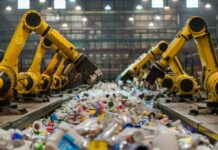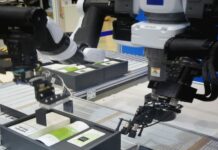The impacts of the quickly expanding plastics industry on the environment, pollution, and resource use can be significantly reduced via a circular bioeconomy. Global plastic manufacturing is predicted to triple by 2100 if current trends continue. Today, roughly 5% of all emissions of greenhouse gases are attributable to the plastics industry. The industry may develop to become a type of carbon sink by supplying a circular, bio-based plastic sector with emissions-free electricity and by avoiding trash burning. Researchers from the Netherlands Environmental Assessment Agency, Utrecht University, the Netherlands Association for Sustainable Energy, and the Netherlands Organization for Applied Scientific Research recently published an article in the journal Nature that draws that conclusion.
None of the models used in the reports of the Climate Change Intergovernmental Panel have expanded on the details of the plastic industry. Therefore, to examine four scenarios for the global plastics industry, the researchers created a new model. These demonstrated that even the Paris Climate Accord’s two-degree goal, which places a high price on greenhouse gas emissions, is insufficient to persuade the plastic industry to transition to a circular economy and bio-based raw materials from fossil feedstocks. The lack of CO2 emissions and lower cost of landfilling plastic than other waste disposal methods may even result from climate legislation.
The amount of plastic waste recycled, the amount of resources consumed, and the amount of CO2 emissions from the plastic sector until 2050 would all significantly increase in a situation with more policies geared toward the circular plastic sector, such as tighter rules for product design and uniformity of plastic types.
This scenario would also prevent the large-scale disposal of plastic waste in landfills. However, focusing only on circularity would put a cap on future emission cuts in the second half of the century because plastic’s potential for storing biogenic and thus non-fossil carbon is underutilized. Additionally, there isn’t enough plastic garbage on hand to use recycling to satisfy the expanding plastic demand. Therefore, if plastic demand is reduced, a fully circular plastic industry will only be feasible.
Using a circular bioeconomy to store carbon
Significant prospects exist for attaining negative emissions through biogenic carbon storage in the circular plastics industry, which also uses bio-based raw materials. The industry may become a carbon sink if it uses high-quality recycling, a minimum amount of trash incineration, emissions-free electricity, and bio-based raw materials. 13% of the biomass used to produce electricity today might be used as a raw material for plastics by 2050. The majority of plastic on earth is found in long-lasting polymers like building materials. There would be a net decrease in emissions if these goods were made from bio-based raw materials. Theoretically, if all plastics made collectively up until the year 2100 were bio-based and had lifespans of decades or even centuries, one could store the equivalent of nine times the annual greenhouse gas emissions currently associated with energy consumption.
Theoretically, if all plastics made collectively up until the year 2100 were bio-based and had lifespans of decades or even centuries, one could store the equivalent of nine times the annual greenhouse gas emissions currently associated with energy consumption. will require better waste collecting and sorting procedures, as well as circular product design, to achieve a high percentage of recycling. To continue the availability of premium plastic, the industry will also need to use chemical recycling more frequently. The impurities are taken out throughout that procedure, supplying new polymers with high-quality raw ingredients. Plastics are crushed into particles for reprocessing during mechanical recycling, which lowers the quality of the plastic and may leave impurities. This renders mechanically recycled plastic inappropriate for uses like food packaging.




























